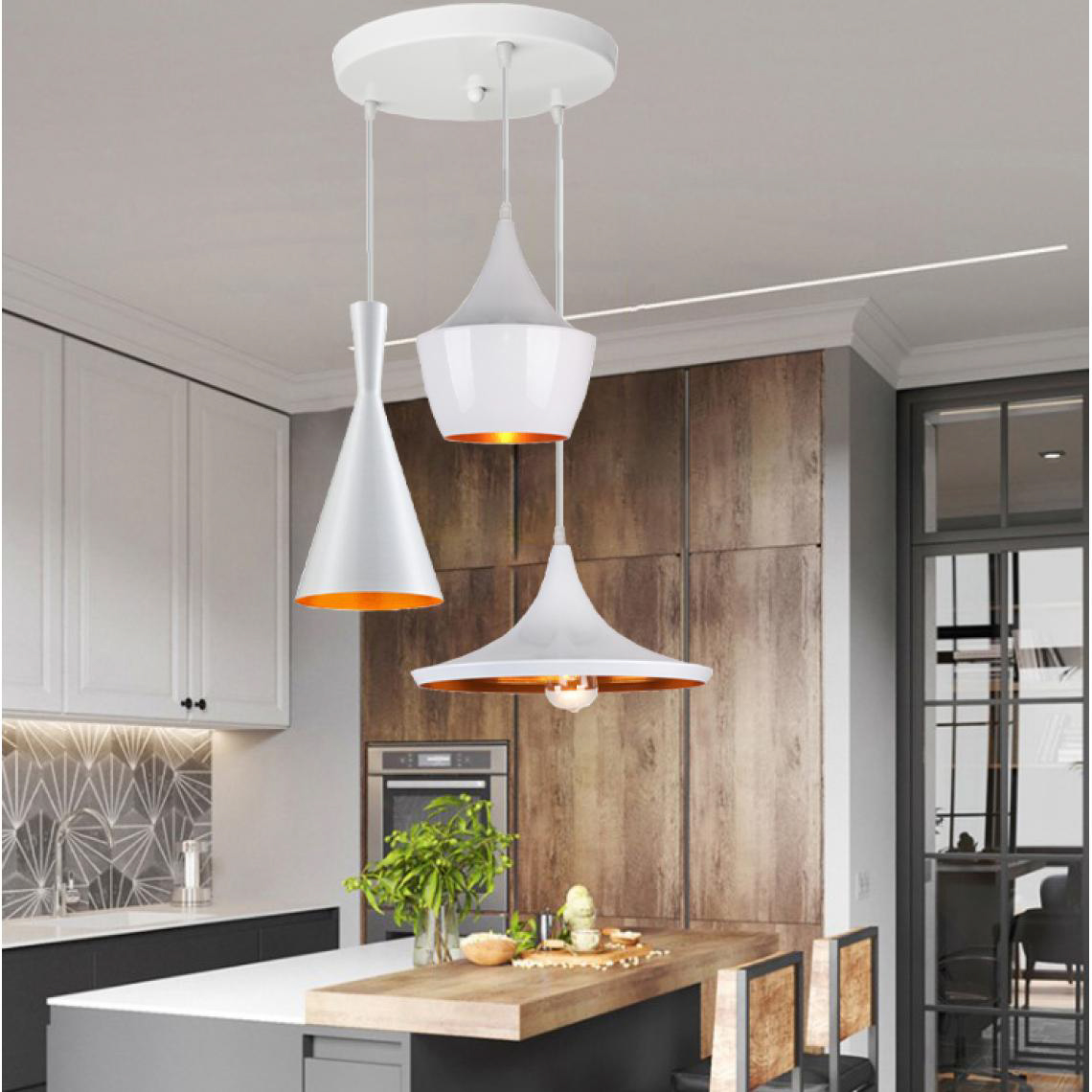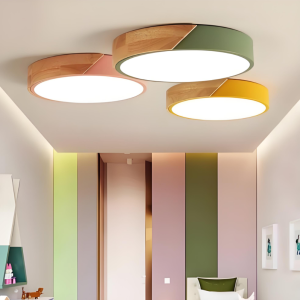
Illuminate Your Space with Pendant Lighting
Pendant lighting is a type of lighting fixture that hangs from the ceiling, typically suspended by a cord, chain, or metal rod. It is a versatile and stylish option for illuminating various spaces in your home. Pendant lighting has been used for centuries, with its origins dating back to medieval times when candles were placed in decorative holders and hung from the ceiling.
Benefits of Using Pendant Lighting
One of the main benefits of emikudo pendant lighting is that it provides focused lighting. Unlike other types of lighting fixtures that spread light in all directions, pendant lights direct light downwards, making them ideal for task lighting. Whether you need to illuminate a kitchen island, dining table, or workspace, pendant lighting can provide the necessary brightness.
Another advantage of pendant lighting is that it saves space. Unlike floor lamps or table lamps that take up valuable floor or surface area, pendant lights hang from the ceiling, freeing up space in your room. This is especially beneficial in smaller rooms or areas with low ceilings where floor space is limited.
In addition to their practical benefits, pendant lights also add style and character to a room. With a wide range of designs and materials available, you can find pendant lights that complement any decor style. Whether you prefer a modern and sleek look or a more traditional and ornate design, there is a pendant light to suit your taste.
Furthermore, pendant lighting is energy-efficient. Many pendant lights use LED bulbs, which consume less energy than traditional incandescent bulbs. LED bulbs also have a longer lifespan, reducing the need for frequent bulb replacements and saving you money on energy bills.
Different Styles of Pendant Lighting
Pendant lighting comes in various styles to suit different aesthetics and design preferences. Here are some popular styles:
1. Modern/Contemporary: Modern pendant lights feature clean lines, minimalist designs, and sleek finishes. They often incorporate materials such as glass, metal, or acrylic to create a contemporary look.
2. Traditional: Traditional pendant lights are characterized by ornate details, intricate patterns, and warm finishes like brass or bronze. They often feature decorative elements such as crystals or fabric shades.
3. Rustic: Rustic pendant lights have a more natural and organic feel. They often incorporate materials like wood, rope, or wrought iron to create a cozy and rustic ambiance.
4. Industrial: Industrial pendant lights are inspired by the utilitarian design of factories and warehouses. They often feature exposed bulbs, metal shades, and raw finishes like brushed steel or aged copper.
5. Art Deco: Art Deco pendant lights are characterized by geometric shapes, bold colors, and luxurious materials like glass or chrome. They often have a glamorous and vintage-inspired look.
Choosing the Right Pendant Lighting for Your Space
When choosing pendant lighting for your space, there are several factors to consider:
1. Size of the room: The size of the room will determine the size of the pendant light you should choose. In larger rooms, you can opt for larger pendant lights to make a statement, while in smaller rooms, smaller pendant lights may be more appropriate.
2. Purpose of the lighting: Consider the purpose of the lighting in the room. If you need task lighting, such as over a kitchen island or dining table, choose pendant lights that provide focused and bright illumination. For ambient lighting, such as in a living room or bedroom, choose pendant lights that create a warm and inviting atmosphere.
3. Height: The height at which you hang your pendant lights is important for both functionality and aesthetics. In general, pendant lights should be hung at a height that allows for comfortable visibility without obstructing views or causing glare. As a rule of thumb, hang pendant lights about 30-36 inches above a kitchen island or dining table and about 60-70 inches above the floor in other areas.
4. Style of the room: Consider the overall style of the room and choose pendant lights that complement the existing decor. For example, if you have a modern and minimalist space, opt for sleek and simple pendant lights. If you have a traditional or rustic room, choose pendant lights with ornate details or natural materials.
Installation and Maintenance of Pendant Lighting
When it comes to installation, it is recommended to hire a professional electrician to ensure that the pendant lighting is installed safely and correctly. A professional electrician will have the knowledge and expertise to handle the electrical wiring and ensure that the pendant lights are securely mounted.
However, if you are confident in your DIY skills, you can install pendant lighting yourself. Before starting the installation process, make sure to turn off the power to the area where you will be working. Follow the manufacturer’s instructions for installation, and use proper tools and equipment. If you are unsure about any step of the installation process, it is best to consult a professional.
Once your pendant lighting is installed, it is important to regularly clean and maintain it to keep it looking its best. Dust the pendant lights regularly with a soft cloth or duster to remove any dirt or debris. If your pendant lights have glass shades, you can clean them with a glass cleaner or a mixture of water and mild soap. Avoid using abrasive cleaners or harsh chemicals that can damage the finish or materials of the pendant lights.
Pendant Lighting as a Focal Point in Your Room

Pendant lighting can serve as a focal point in your room, adding visual interest and drawing attention to specific areas or objects. Here are some tips for using pendant lighting as a focal point:
1. Choosing a statement piece: Select a pendant light that stands out and makes a statement. This could be a large and dramatic pendant light with an eye-catching design or a unique material.
2. Creating a cohesive look with other decor elements: Coordinate the pendant lighting with other decor elements in the room to create a cohesive and harmonious look. Consider the colors, materials, and styles of other furniture, accessories, or artwork in the space.
3. Using pendant lighting to highlight artwork or furniture: Position pendant lights strategically to highlight artwork or furniture pieces in the room. For example, hang pendant lights above a gallery wall to illuminate the artwork or above a statement piece of furniture to draw attention to it.
Pendant Lighting in the Kitchen
Pendant lighting is a popular choice for kitchens, as it provides both functional and decorative lighting. Here are some ideas for using pendant lighting in different areas of the kitchen:
1. Over the island: Hang pendant lights above a kitchen island to provide task lighting for food preparation and cooking. Choose pendant lights that are proportionate to the size of the island and hang them at a height that allows for comfortable visibility.
2. Over the sink: Install pendant lights above the sink area to provide focused lighting for washing dishes or preparing food. Choose pendant lights that are water-resistant and easy to clean.
3. Over the dining table: Hang pendant lights above the dining table to create a warm and inviting atmosphere for meals. Choose pendant lights that provide enough brightness for dining but also have a dimming option for more intimate gatherings.
Pendant Lighting in the Living Room
Pendant lighting can add a touch of elegance and sophistication to your living room. Here are some ideas for using pendant lighting in different areas of the living room:
1. Over the coffee table: Hang a pendant light above the coffee table to create a focal point and provide ambient lighting for the seating area. Choose a pendant light that complements the style of your coffee table and other furniture in the room.
2. Over the reading nook: Install a pendant light above a reading nook or cozy corner to provide focused lighting for reading or relaxing. Choose a pendant light with a warm and soft glow to create a cozy ambiance.
3. Over the fireplace: Hang pendant lights on either side of the fireplace to create a symmetrical and balanced look. This will draw attention to the fireplace and create a cozy and inviting atmosphere.
Pendant Lighting in the Bedroom
Pendant lighting can add a touch of glamour and luxury to your bedroom. Here are some ideas for using pendant lighting in different areas of the bedroom:
1. Over the bed: Hang pendant lights on either side of the bed as an alternative to bedside table lamps. This will free up space on your bedside tables and create a sleek and modern look.
2. Over the dressing table: Install pendant lights above the dressing table to provide focused lighting for getting ready in the morning or evening. Choose pendant lights with adjustable brightness or dimming options for versatility.
3. Over the seating area: Hang pendant lights above a seating area in your bedroom, such as a reading chair or window seat, to create a cozy and intimate atmosphere. Choose pendant lights with soft and warm lighting to enhance relaxation.
Enhancing Your Decor with Pendant Lighting
Pendant lighting can enhance your decor and tie together different elements in your room. Here are some tips for using pendant lighting to enhance your decor:
1. Mixing and matching styles: Don’t be afraid to mix and match different styles of pendant lighting to create an eclectic and unique look. For example, you can combine modern pendant lights with rustic or industrial elements for a more interesting and dynamic space.
2. Using pendant lighting to complement other lighting fixtures: Coordinate your pendant lighting with other lighting fixtures in the room, such as chandeliers, wall sconces, or floor lamps. Choose pendant lights that have similar finishes, materials, or design elements to create a cohesive look.
3. Incorporating pendant lighting into a themed room: If you have a themed room, such as a coastal or bohemian-inspired space, choose pendant lights that reflect the theme. For example, in a coastal-themed room, opt for pendant lights with a nautical or beach-inspired design.
Pendant lighting is a versatile and stylish option for illuminating various spaces in your home. It provides focused lighting, saves space, adds style and character to a room, and is energy-efficient. With different styles available, such as modern, traditional, rustic, industrial, and art deco, you can find pendant lights to suit any decor style. When choosing pendant lighting for your space, consider the size of the room, the purpose of the lighting, the height at which to hang the lights, and the style of the room. Pendant lighting can serve as a focal point in your room by choosing a statement piece, creating a cohesive look with other decor elements, or using it to highlight artwork or furniture. In the kitchen, pendant lighting can be used over the island, sink, or dining table. In the living room, it can be used over the coffee table, reading nook, or fireplace. In the bedroom, it can be used over the bed, dressing table, or seating area. Pendant lighting can enhance your decor by mixing and matching styles, complementing other lighting fixtures, or incorporating it into a themed room. So why not try pendant lighting in your own home and enjoy its many benefits and style possibilities?

